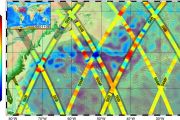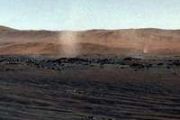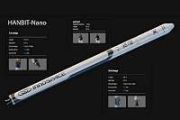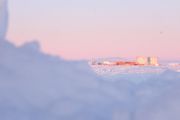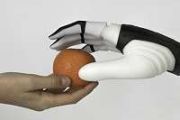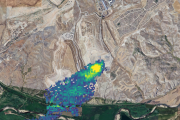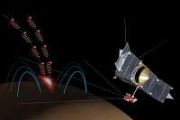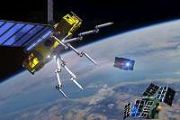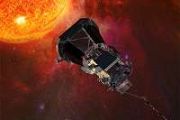
Copernical Team
Mitsubishi Electric announce the AnyMile logistics operations management platform
 Mitsubishi Electric US, Inc. has announced its drone-based logistics operations management platform, called AnyMile, a holistic solution that is designed to enable businesses and fleet operators to schedule and manage cargo deliveries via drones over long distances of up to several hundred miles.
The platform is intended to support operation across all known categories of drones - multi-ro
Mitsubishi Electric US, Inc. has announced its drone-based logistics operations management platform, called AnyMile, a holistic solution that is designed to enable businesses and fleet operators to schedule and manage cargo deliveries via drones over long distances of up to several hundred miles.
The platform is intended to support operation across all known categories of drones - multi-ro U.N. panel says ozone layer will recover in about 40 years
 Earth's ozone layer is on track to recover within four decades thanks to the 1987 Montreal Protocol, then a landmark multinational environmental agreement, a United Nations-supported panel said on Monday.
The Montreal Protocol regulated the consumption and production of nearly 100 manmade chemicals that researchers complained created ozone depletion. The panel on Monday said that 99% of
Earth's ozone layer is on track to recover within four decades thanks to the 1987 Montreal Protocol, then a landmark multinational environmental agreement, a United Nations-supported panel said on Monday.
The Montreal Protocol regulated the consumption and production of nearly 100 manmade chemicals that researchers complained created ozone depletion. The panel on Monday said that 99% of China's first private sector 2023 rocket launch up, up and away
 Galactic Energy, a private aerospace manufacturer in Beijing, launched its fifth Ceres 1 rocket on Monday afternoon, deploying five small satellites into orbit.
The Ceres 1 Y5 rocket blasted off at 1:04 pm from the Jiuquan Satellite Launch Center in the Gobi Desert and placed the satellites into a preset orbit shortly after, the company announced in a news release.
It was China's fir
Galactic Energy, a private aerospace manufacturer in Beijing, launched its fifth Ceres 1 rocket on Monday afternoon, deploying five small satellites into orbit.
The Ceres 1 Y5 rocket blasted off at 1:04 pm from the Jiuquan Satellite Launch Center in the Gobi Desert and placed the satellites into a preset orbit shortly after, the company announced in a news release.
It was China's fir Webb reveals links between galaxies near and far
 A new analysis of distant galaxies imaged by NASA's James Webb Space Telescope shows that they are extremely young and share some remarkable similarities to "green peas," a rare class of small galaxies in our cosmic backyard.
"With detailed chemical fingerprints of these early galaxies, we see that they include what might be the most primitive galaxy identified so far. At the same time, we
A new analysis of distant galaxies imaged by NASA's James Webb Space Telescope shows that they are extremely young and share some remarkable similarities to "green peas," a rare class of small galaxies in our cosmic backyard.
"With detailed chemical fingerprints of these early galaxies, we see that they include what might be the most primitive galaxy identified so far. At the same time, we NASA selects experimental space technology concepts for initial study
 Imagine a future in space where pellet-beam propulsion systems speed up travel to other worlds, pipelines on the Moon transport oxygen between settlements, and Martian bricks grow on their own before being assembled into homes. Researchers will delve into these ideas and more using NASA grant funding.
The NASA Innovative Advanced Concepts (NIAC) program fosters innovation by funding early-
Imagine a future in space where pellet-beam propulsion systems speed up travel to other worlds, pipelines on the Moon transport oxygen between settlements, and Martian bricks grow on their own before being assembled into homes. Researchers will delve into these ideas and more using NASA grant funding.
The NASA Innovative Advanced Concepts (NIAC) program fosters innovation by funding early- First rocket launch of the New Year leaves Wenchang for space
 China launched a Long March 7A rocket from the Wenchang Space Launch Center in Hainan province on Monday morning, sending three satellites into space as part of its first space mission of 2023.
The colossal 60.1-meter rocket blasted off at 6:00 am from the coastal launch center, and soon deployed the Shijian 23 and Shiyan 22A and 22B experimental satellites into orbit, according to a news
China launched a Long March 7A rocket from the Wenchang Space Launch Center in Hainan province on Monday morning, sending three satellites into space as part of its first space mission of 2023.
The colossal 60.1-meter rocket blasted off at 6:00 am from the coastal launch center, and soon deployed the Shijian 23 and Shiyan 22A and 22B experimental satellites into orbit, according to a news Blue Canyon Technologies provides small satellite critical technologies on Transporter-6 Launch
 Small satellite manufacturer and mission services provider Blue Canyon Technologies, LLC ("BCT" or "Blue Canyon"), a subsidiary of Raytheon Technologies, has announced its contributions to the first orbital launch of 2023. The Transporter-6 launch pitched 114 small payloads into polar orbit on January 3, with Blue Canyon providing critical hardware components for several of the SmallSat missions
Small satellite manufacturer and mission services provider Blue Canyon Technologies, LLC ("BCT" or "Blue Canyon"), a subsidiary of Raytheon Technologies, has announced its contributions to the first orbital launch of 2023. The Transporter-6 launch pitched 114 small payloads into polar orbit on January 3, with Blue Canyon providing critical hardware components for several of the SmallSat missions Speedcast wins contract renewal for Asia-Pacific Teleport Services
 Speedcast, a leading communications and IT services provider, has been awarded a contract extension by Airbus to provide gateway hosting services offering secure access to its SKYNET military satellite system from the Asia-Pacific region. Airbus is the trusted partner for the UK's secure military satellite communications program.
In 2016, Speedcast built two 11m antenna systems at one of i
Speedcast, a leading communications and IT services provider, has been awarded a contract extension by Airbus to provide gateway hosting services offering secure access to its SKYNET military satellite system from the Asia-Pacific region. Airbus is the trusted partner for the UK's secure military satellite communications program.
In 2016, Speedcast built two 11m antenna systems at one of i Webb reveals wide diversity of galaxies in the early universe
 New data from the James Webb Space Telescope (JWST) have revealed that the structures of galaxies in the early universe were much more diverse and mature than previously known. Scientists compared images of hundreds of galaxies taken by JWST for the Cosmic Evolution Early Release Science (CEERS) Survey with corresponding images previously taken by the Hubble Space Telescope and presented the res
New data from the James Webb Space Telescope (JWST) have revealed that the structures of galaxies in the early universe were much more diverse and mature than previously known. Scientists compared images of hundreds of galaxies taken by JWST for the Cosmic Evolution Early Release Science (CEERS) Survey with corresponding images previously taken by the Hubble Space Telescope and presented the res Chinese scientists discover ubiquitous, increasing ferric iron on lunar surface
 The Moon has been considered extremely reductive since the Apollo era, as estimated by the low ferric iron content in lunar samples returned in the 1970s. In addition, it has long been a mystery whether a large amount of ferric iron exists on the Moon and how it is formed.
Recently, however, a research team led by Profs. XU Yigang and HE Hongping from the Guangzhou Institute of Geochemistr
The Moon has been considered extremely reductive since the Apollo era, as estimated by the low ferric iron content in lunar samples returned in the 1970s. In addition, it has long been a mystery whether a large amount of ferric iron exists on the Moon and how it is formed.
Recently, however, a research team led by Profs. XU Yigang and HE Hongping from the Guangzhou Institute of Geochemistr 


